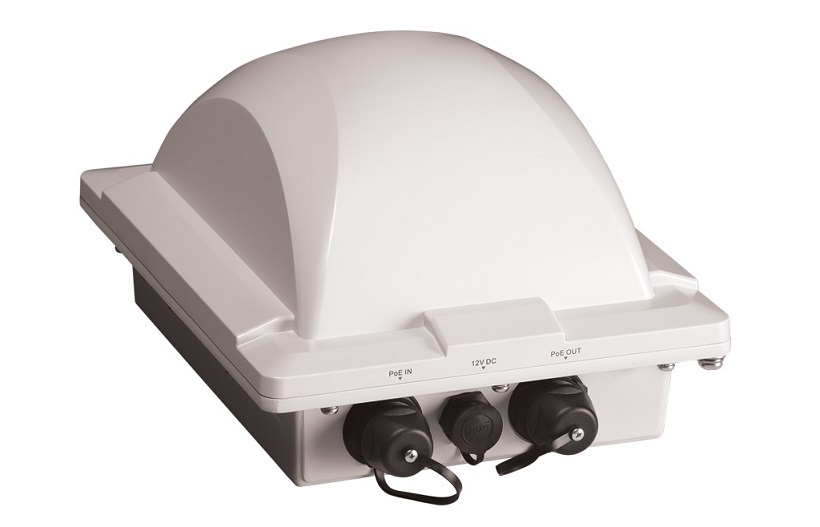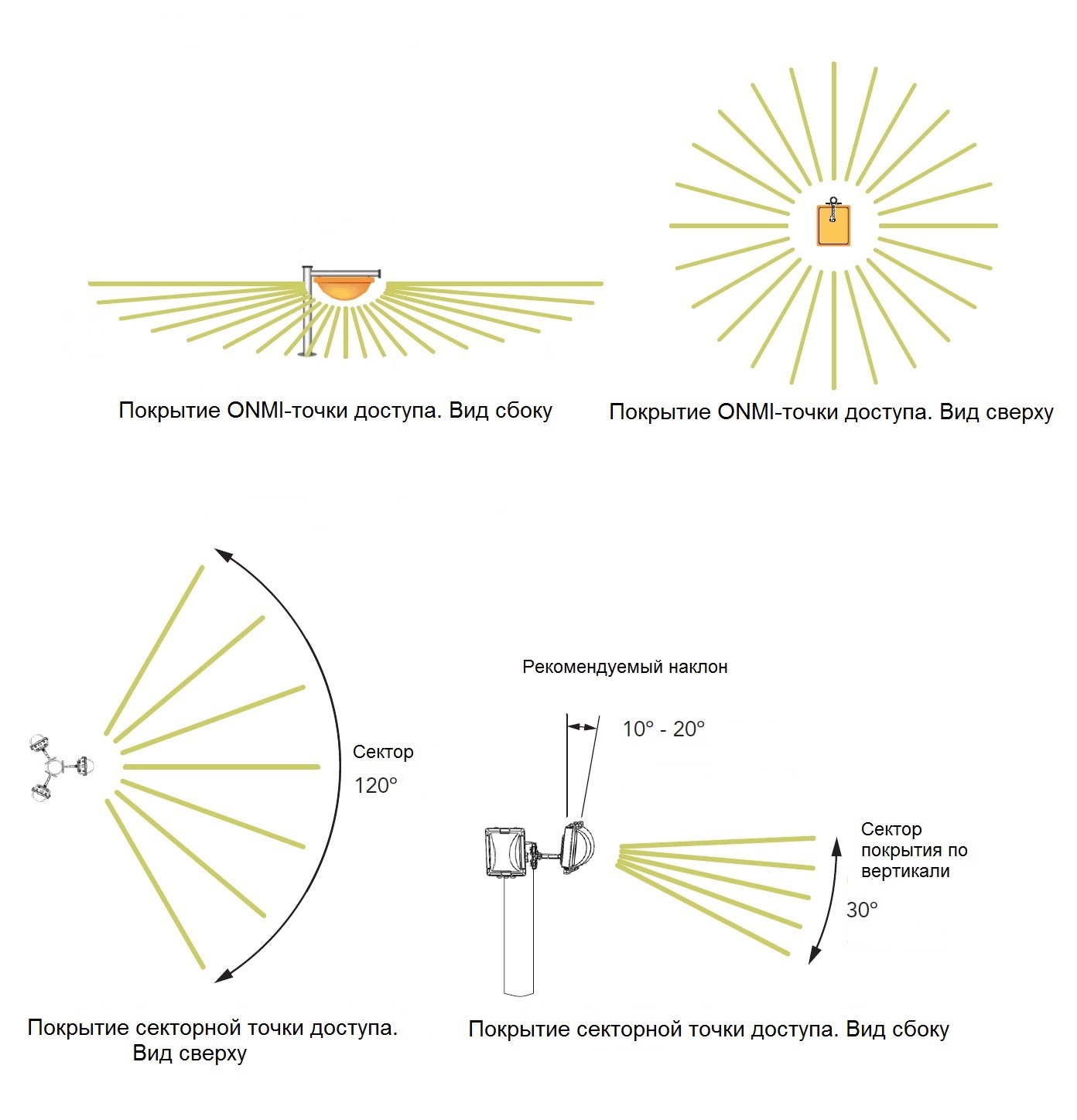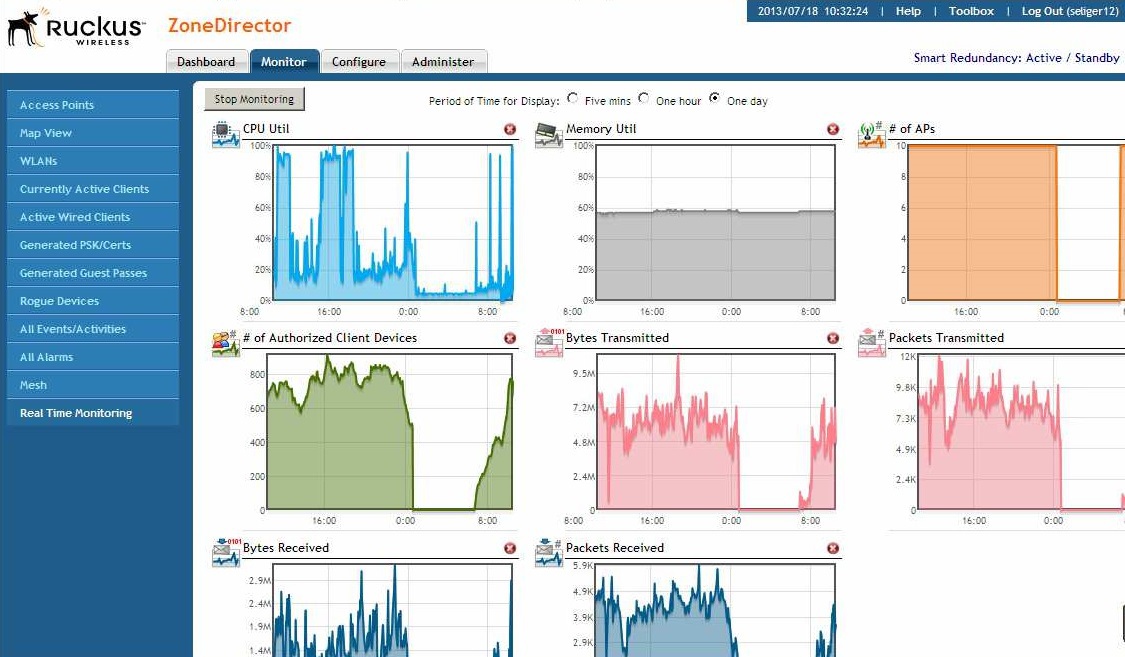How to get a lot of street wifi? Experience in building OpenDoor networks with high subscriber density
Street, park, trees, a large number of subscribers - the worst conditions for WiFi coverage. If you add summer, i.e. foliage on trees, weakening the signal and youth undermined on gadgets, then we get a crash test for wireless equipment. Such conditions were at Seliger, where at one time a WiFi-network was deployed for the participants of the annual rally.

')
Initial data. 14 thousand people. Site 20 hectares. Street wifi. The main channel is 100 Mbit / s with no restrictions on the duration of the Internet session and the volume of consumed traffic. Loads in the form of competitions of participants of the rally on the speed of searching for information on the Internet - up to 1000 concurrent subscribers. And all this with a minimum amount of WiFi access points.
The solution of the problem. Based on the criterion of minimizing the number of equipment installation sites and high density of client devices, Ruckus Wireless access points were selected. (If you take non-professional equipment, then the number of access points required for such a number of subscribers can be equal to the number of trees in the forest - a joke, but not far from the truth).
Defining a user profile . It was suggested that clients use mainly smartphones, which means that there is only one transceiver, and mostly in the 2.4 GHz band.
A typical station for service throughout the azimuth consists of three sector devices. But often due to the complexity of placement, some of the sites (points of presence) were located not in the center of the cluster of users and included only one or two sectors.

We estimate the available capacity of the systems , based on the selected performance per client. The client profile is limited to the 2.4 GHz band and one polarization. In such conditions, using the 20 MHz wide bands, we can count on the performance in the 65 Mbit / s radio channel. Useful performance at such a channel speed will be about 45 Mbps.
Using only the 2.4 GHz band in the open space leads to a significant interdependence of the systems, so the capacity of the equipment will be reduced by repeating. Estimating the repeats at the level of 35%, we can talk about the performance of about 30 Mbit / s per base station. Thus, with a load of 100 subscribers, we can talk about about 256 kbit / s of real traffic to the client device. It seems to be not much. But since Ruckus supports fair servicing of client devices, you can allow oversubscription and limit the capacity per subscriber to twice the value.
According to the task, laying of cable systems was allowed only underground and with a voltage not exceeding 48 volts. The logical network diagram represented several radio networks with different security settings, each network was tagged with its own VLAN. Thus, a standard base station project was developed from a 6-meter mast support, several Ruckus ZoneFlex7762 devices, injectors, and media converters.
The network used two types of access points - models ZF7762-S and ZF7762. The symbol "S" - means a sector antenna with a gain of 12 dB and an angle of coverage of 120 degrees. Without the “S” symbol, we have an omni-directional (ONMI) access point.

The appearance of the access point Ruckus ZoneFlex7762

Ruckus ZoneFlex7762-S (sector) and 7762 (OMNI) access points with open covers

The coverage area of ONMI and sector access points and the method of their attachment in places of suspension

Network block diagram

Curiously, all 14,000 subscribers were served by just one controller in the 1100 series. Given the importance of the event, the controller was reserved (they allow hot backups) in the same way to ensure reliability.
The survey was performed using Fluke Network utilities. The evaluation was made both by the signal level of the sector and by the level of interference of neighboring stations; the frequency plan and the slope of the sectors changed according to the results. After commissioning, the main system parameters were monitored, such as the number of users and network performance.

System performance, availability of sectors

Statistics on traffic, client devices
Brief results of network deployment .
The assumption about the predominance of single-channel devices was confirmed, the network capacity and bandwidth were calculated correctly. The system withstood a peak load of one thousand connections, the load on a part of points exceeded 150 connections per point. The customer, for obvious reasons, was very worried about the stability of the Wi-Fi network in such a busy mode, but Ruckus proved to be reliable high-performance equipment. As a result, there were no complaints from the organizers of the event and users.

')
Initial data. 14 thousand people. Site 20 hectares. Street wifi. The main channel is 100 Mbit / s with no restrictions on the duration of the Internet session and the volume of consumed traffic. Loads in the form of competitions of participants of the rally on the speed of searching for information on the Internet - up to 1000 concurrent subscribers. And all this with a minimum amount of WiFi access points.
The solution of the problem. Based on the criterion of minimizing the number of equipment installation sites and high density of client devices, Ruckus Wireless access points were selected. (If you take non-professional equipment, then the number of access points required for such a number of subscribers can be equal to the number of trees in the forest - a joke, but not far from the truth).
Defining a user profile . It was suggested that clients use mainly smartphones, which means that there is only one transceiver, and mostly in the 2.4 GHz band.
A typical station for service throughout the azimuth consists of three sector devices. But often due to the complexity of placement, some of the sites (points of presence) were located not in the center of the cluster of users and included only one or two sectors.

We estimate the available capacity of the systems , based on the selected performance per client. The client profile is limited to the 2.4 GHz band and one polarization. In such conditions, using the 20 MHz wide bands, we can count on the performance in the 65 Mbit / s radio channel. Useful performance at such a channel speed will be about 45 Mbps.
Using only the 2.4 GHz band in the open space leads to a significant interdependence of the systems, so the capacity of the equipment will be reduced by repeating. Estimating the repeats at the level of 35%, we can talk about the performance of about 30 Mbit / s per base station. Thus, with a load of 100 subscribers, we can talk about about 256 kbit / s of real traffic to the client device. It seems to be not much. But since Ruckus supports fair servicing of client devices, you can allow oversubscription and limit the capacity per subscriber to twice the value.
According to the task, laying of cable systems was allowed only underground and with a voltage not exceeding 48 volts. The logical network diagram represented several radio networks with different security settings, each network was tagged with its own VLAN. Thus, a standard base station project was developed from a 6-meter mast support, several Ruckus ZoneFlex7762 devices, injectors, and media converters.
The network used two types of access points - models ZF7762-S and ZF7762. The symbol "S" - means a sector antenna with a gain of 12 dB and an angle of coverage of 120 degrees. Without the “S” symbol, we have an omni-directional (ONMI) access point.

The appearance of the access point Ruckus ZoneFlex7762

Ruckus ZoneFlex7762-S (sector) and 7762 (OMNI) access points with open covers

The coverage area of ONMI and sector access points and the method of their attachment in places of suspension

Network block diagram

Curiously, all 14,000 subscribers were served by just one controller in the 1100 series. Given the importance of the event, the controller was reserved (they allow hot backups) in the same way to ensure reliability.
The survey was performed using Fluke Network utilities. The evaluation was made both by the signal level of the sector and by the level of interference of neighboring stations; the frequency plan and the slope of the sectors changed according to the results. After commissioning, the main system parameters were monitored, such as the number of users and network performance.

System performance, availability of sectors

Statistics on traffic, client devices
Brief results of network deployment .
The assumption about the predominance of single-channel devices was confirmed, the network capacity and bandwidth were calculated correctly. The system withstood a peak load of one thousand connections, the load on a part of points exceeded 150 connections per point. The customer, for obvious reasons, was very worried about the stability of the Wi-Fi network in such a busy mode, but Ruckus proved to be reliable high-performance equipment. As a result, there were no complaints from the organizers of the event and users.
Source: https://habr.com/ru/post/247771/
All Articles